Rem Koolhaas‘ 1972 Architectural Association thesis (together with Madelon Vreisendorp, Elia Zenghelis, and Zoe Zenghelis). Like in West Berlin at the time, the Wall becomes here a condition of freedom by self imprisonment. Voluntarily segregated, people find shelter within the walls of a prison of metropolitan scale.
From the MOMA gallery label text:
These drawings come from a series of eighteen drawings, watercolors, and collages called Exodus, or the Voluntary Prisoners of Architecture. The dense pictographic storyboard reflects Koolhaas’s earlier stints as journalist and screenwriter and is intended to be read simultaneously as a factual and a fictional scenario for the contemporary metropolis.
The title of the project alludes to Cold War West Berlin, a restricted enclave encircled by a forbidding wall—in effect, a prison on the scale of a metropolis, and one in which people sought refuge voluntarily. Exodus proposes a walled city in a long strip, with tall barriers that cut through London’s urban fabric—an intervention designed to create a new urban culture invigorated by architectural innovation and political subversion. Here Koolhaas and his collaborators use collage to create vivid scenes of life within these visionary urban confines.


















Exodus, or the voluntary prisoners of architecture
Rem Koolhaas, Madelon Vreisendorp, Elia Zenghelis, and Zoe Zenghelis (1972)
Once, a city was divided in two parts. One part became the Good Half, the other part the Bad Half.
The inhabitants of the Bad Half began to flock to the good part of the divided city, rapidly swelling into an urban exodus.
If this situation had been allowed to continue forever, the population of the Good Half would have doubled, while the Bad Half would have turned into a ghost town.
After all attempts to interrupt this undesirable migration had failed, the authorities of the bad part made desperate and savage use of architecture: they built a wall around the good part of the city, making it completely inaccessible to their subjects.
The Wall was a masterpiece.
Originally no more than some pathetic strings of barbed wire abruptly dropped on the imaginary line of the border, its psychological and symbolic effects were infinitely more powerful than its physical appearance.
The Good Half, now glimpsed only over the forbidding obstacle from an agonizing distance, became even more irresistible.
Those trapped, left behind in the gloomy Bad Half, became obsessed with vain plans for escape. Hopelessness reigned supreme on the wrong side of the Wall.
As so often before in this history of mankind, architecture was the guilty instrument of despair.
Architecture
It is possible to imagine a mirror image of this terrifying architecture, a force as intense and devastating but used instead in the service of positive intentions.
Division, isolation, inequality, aggression, destruction, all the negative aspects of the Wall, could be the ingredients of a new phenomenon: architectural warfare against undesirable conditions, in this case London. This would be an immodest architecture committed not to timid improvements but to the provision of totally desirable alternatives.
The inhabitants of this architecture, those strong enough to love it, would become its Voluntary Prisoners, ecstatic in the freedom of their architectural confines.
Contrary to modern architecture and its desperate afterbirths, this new architecture is neither authoritarian nor hysterical: it is the hedonistic science of designing collective facilities that fully accommodate individual desires.
From the outside this architecture is a sequence of serene monuments; the life inside produces a continuous state of ornamental frenzy and decorative delirium, an overdose of symbols.
This will be an architecture that generates its own successors, miraculously curing architects of their masochism and self-hatred.
The Voluntary Prisoners
This study describes the steps that will have to be taken to establish an architectural oasis in the behavioral sink of London.
Suddenly, a strip of intense metropolitan desirability runs through the center of London.
This Strip is like a runway, a landing strip for the new architecture of collective monuments.
Two walls enclose and protect this zone to retain its integrity and to prevent any contamination of its surface by the cancerous organism that threatens to engulf it.
Soon, the first inmates beg for ad mission.
Their number rapidly swells into an unstoppable flow.
We witness the Exodus of London. The physical structure of the old town will not be able to stand the continuing competition of this new architectural presence. London as we know it will become a pack of ruins.
Reception Area
After crossing the Wall, exhausted fugitives are received by attentive wardens in a lobby between the Reception Area and the Wall. The consoling atmosphere of this waiting room is an architectural sigh of relief. The first step in the indoctrination program of the other side of the Wall is realized: the newcomers enter the Reception Area.
On arrival a spectacular welcome is given to all. The activities inside the Reception Area require minimal training for new arrivals, which is only accomplished by overwhelming previously undernourished senses. The training is administered under the most hedonistic conditions: luxury and well-being.
The Reception Area is permanentIy crowded by amateurs who through their dealings exercise an inspired state of political inventiveness, which is echoed by the architecture.
The senses are overwhelmed by thought.
The sole concerns of the participants are the present and the future of the Strip: they propose architectural refinements, extensions, strategies. Excited groups elaborate proposals in special rooms, while others continuously modify the model. The most contradictory programs fuse without compromise.
Central Area
The roof of the Reception Area, accessible from the inside, is a high-altitude plateau from which both the decay of the old town and the physical splendor of the Strip can be experienced.
From here, a gigantic escalator descends into a preserved fragment of the “old” London.
These ancient buildings provide temporary accommodation for recent arrivals during their training period: the area is an environmental sluice.
Ceremonial Square
The other (west) side of the roof is completely empty, except for the tower of the Jamming Station, which will protect the inhabitants of the Strip from electronic exposure to the rest of the world. This black square will accommodate a mixture of physical and mental exercises, a conceptual Olympics.
Tip of the Strip
This is the frontline of the architectural warfare waged on the old London. Here, the merciless progress of the Strip performs a daily miracle; the corrective rage of the architecture is at its most intense. In a continuous confrontation with the old city, existing structures are destroyed by the new architecture, and trivial fights break out between the inmates of the old London and the Voluntary Prisoners of the Strip. Some monuments of the old civilization are incorporated into the zone after a rehabilitation of their questionable purposes and programs.
A model of the Strip, continuously modified through incoming information from the Reception Area, conveys strategies, plans, and instructions. Life in the building barracks at the Tip of the Strip can be hard, but the ongoing creation of this object leaves its builders exhausted with satisfaction.
The Park of the Four Elements
Divided into four square areas, the Park of the Four Elements disappears into the ground in four gigantic steps.
The first square, “Air,” consists of several sunken pavilions overgrown with elaborate networks of ducts that emit various mixtures of gasses to create aromatic and hallucinogenic experiences. Through subtle variations in dosage, density, and perhaps even color, these volatile scented clouds can be modified or sustained like musical instruments.
Moods of exhilaration, depression, serenity, and receptivity can be evoked invisibly in programmed or improvised sequences and rhythms. Vertical air jets provide environmental protection above the pavilions.
Identical in size to the first square but sunken below surface level is “Desert,” an artificial reconstruction of an Egyptian landscape, simulating its dizzying conditions: a pyramid, a small oasis, and the fire organ a steel frame with innumerable outlets for flames of different intensity, color, and heat.
It is played at night to provide a pyrotechnic spectacle visible from all parts of the Strip, a nocturnal sun.
At the end of tour linear caves, mirage machines project images of desirable ideals.
Those in the Desert who enter the tubes run to reach these beatific images. But actual contact can never be established: they run on a belt that moves in the opposite direction at a speed that increases as the distance between mirage and runner shrinks. The frustrated energies and desires will have to be channeled into sublimated activities. (The secret that the pyramid does not contain a treasure chamber will be kept forever.)
Deeper still into the earth is “Water,” a pool whose surface is permanent I y agitated through the regular but variable movement of one of its walls, producing waves of sometimes gigantic proportions. This lake is the domain of some pleasure seekers, who have become completely addicted to the challenge of the waves. Day and night, the sounds of this interior sea serve as the acoustic background to the activities of the Strip.
The fourth square, at the bottom of the pit, “Earth,” is occupied by a vaguely familiar mountain, its summit precisely level with the surface of the Strip. At the top, a group of sculptors debate whose bust to carve into the rock; but in the accelerated atmosphere of this prison, no one is important long enough for them ever to reach a conclusion.
The walls of the cavity repeat the past history of this location like a scar; part of a now deserted Underground line is suspended in this void. Deep in the other walls, cave dwellings and cavernous meeting places are carved out to accommodate certain primordial mysteries.
After spiraling through the tour squares, the wanderer is returned by an escalator to the surface.
Square of the Arts
Devoted to the accelerated creation, evolution, and exhibition of objects, the Square of the Arts is the Strip’s industrial zone an urban open space paved in a synthetic material that offers a high degree of comfort to its users. Dispersed on this surface are the buildings where people go to satisfy their love for objects.
There are three major buildings on the Square. One IS old; It has always been a museum. The other two were built by the Voluntary Prisoners. The first bulges from the surface; it was built. It with the materials of the second, which was carved out of the Square and is in fact the interior of the first. At first sight it is impossible to understand that these twin buildings are one, and that this is not a secret. Cooperatively forming an instrument for the indoctrination of the existing culture, they display the past in the only possible way: they ex pose memory by allowing its provocative vacuums to be filled with the explosive emotions of onlookers. They are a school. The density and impenetrability of the first building intensifies the expectation of arriving students who wait outside its gates, while the apparent emptiness of the second provokes anxious suspense. The visitors, driven by an irresistible power, begin a journey down the escalators that link a series of enigmatic galleries into an exploration of the most mysterious corners of history. At the lowest gallery, they discover a bottomless interior; new galleries are under construction, filling, as completed, with unfamiliar works that emerge in a continuous flow from a tunnel that is seemingly connected to the old museum.
Returning to the surface, the traces of this course are retained on the retina and transferred to certain parts of the brain.
The old building contains erased pictures of the past. The uninformed visitor’s first impression is of an almost infinite number of empty frames, blank canvases, and vacant pedestals. Only those with knowledge acquired on the previous course can decipher the spectacle by projecting their memories onto these empty provocations: a continuous film of images, improvements, and accelerat- ed versions of the history of art automatically produce new works, filling the space with recollections, modifications, and inventions.
Apart from these three main buildings, the only tangible exhibits in the Square are small buildings that resemble pawns on the grid of an ancient game. They are dropped like meteorites of unknown metaphysical meaning, waiting to be moved to the next intersection of the game; with each move they are further deciphered.
Baths
The function of the Baths is to create and recycle private and public fantasies, to invent, test, and possibly introduce new forms of behavior. The building is a social condenser.
It brings hidden motivations, desires, and impulses to the surface to be refined for recognition, provocation, and development.
The ground floor is an area of public action and display, a continuous parade of personalities and bodies, a stage for a cyclical dialectic between exhibitionism and spectatorship. It is an area for the observation and possible seduction of partners who will be invited to participate actively in private fantasies and the pursuit of desires.
The two long walls of the building consist of an infinite number of cells of various sizes to which individuals, couples, or groups can retire. These cells are equipped to encourage indulgence and to facilitate the realization of fantasies and social inventions; they invite all forms of interaction and exchange.
The public area/private cells sequence becomes a creative chain reaction. From the cells, successful performers or those confident about the validity and originality of their actions and proposals filter into the two arenas at both ends of the Baths. Finally, in the arena, they perform. The freshness and suggestiveness of these performances activate dormant parts of the brain and trigger a continuous explosion of ideas in the audience. Overcharged by this spectacle, the Voluntary Prisoners descend to the ground floor looking for those willing and able to work out new elaborations.
Institute of Biological Transactions
The Institute sustains the Voluntary Prisoners through biological emergencies and physical and mental crises; it also demonstrates the harmless nature of mortality.
It is divided into four parts by a cruciform building. The first part, the hospital, contains the complete arsenal of modern healing, but is devoted to a radical deescalation of the medical process, to the abolition of the compulsive rage to heal. No forced heartbeats here, no chemical invasions, no sadistic extensions of life. This new strategy lowers the average life expectancy and with it, senility, physical decay, nausea, and exhaustion. In fact, patients here will be “healthy.
The hospital is a sequence of pavilions, each devoted to a particular disease. They are connected by a medical boulevard -a slow-moving belt that displays the sick in a continuous procession, with a group of dancing nurses in transparent uniforms, medical equipment disguised as totem poles, and rich perfumes that suppress the familiar stench of healing, in an almost festive atmosphere of operatic melodies.
Doctors select their patients from this belt, invite them to their individual pavilions, test their vitality, and almost playfully administer their (medical) knowledge. If they fail, the patient is returned to the conveyer; perhaps another doctor tries the patient, but it soon becomes apparent that the belt leads beyond the pavilions, through the cruciform building, and straight into the cemetery.
The mood here is continuously festive. The same smells, the same ethereal dance, are made still more human by the contrast between the ruthlessly formallay out of the plots and the unnaturalness of the dark green shrubbery.
In another part of the square, the Three Palaces of Birth, there is a statistical balance between births and deaths. The physical proximity of these events suggests the consolation of a causal relationship between the two, a gentle relay. The lowering of the average life expectancy creates an ambitious urgency; it does not allow the luxuries of underexploited brains, the artificial prolongation of childishness or wasted adolescence. The Three Palaces of Birth will also care for babies, educating them and turning them into small adults who -at the earliest possible date – can activefy participate in life in the Strip.
In the fourth part, mental patients will be on display as in former days, not as themselves but as part of a well-produced exhibition of their delusions, sustained by the most advanced technical equipment: an infinite number of Napoleons, Florence Nightingales, Einsteins, Jesus Christs, and Joans of Arc all in their custom-made uniforms.
Finally, the cruciform building, which separates the four compartments, contains the archives- records of all vital facts, developments, and life incidents of past and present Prisoners. Bureaucracy, so often criticized for its passion for control, contempt for privacy, and moral blindness, guarantees the Prisoners a new kind of immortality: this statistical treasure, linked to the most imaginative computers, produces not only instant biographies of the dead in seconds, but also premature biographies of the living -mixtures of facts and ruthless extrapolations -used here as essential instruments for plotting a course and planning the future.
Park of Aggression
In this recreational area, rudimentary structures were erected to correct and channel aggressive desires into creative confrontations. The unfolding ego/world dialectic generates the continuous emergence of conflicting ideologies. Their imposed coexistence invokes childish dreams and the desire to play. The Park is a reservoir of sustained tension waiting to be released, a gigantic playground of flexible dimensions to accommodate the Strip’s only sport: aggression.
Here, conflicts are reenacted: the staged battles dissolve the corrosive hysteria of good manners. On an individual level, the Park is a sanatorium where patients recover from remnants of Old World infections: hypocrisy and genocide. The diagnoses provide richer forms of intercourse. The most prominent edifices are the two towers. One is infinite, a continuous spiral; the other, consisting of 42 platforms, has a familiar architectural style. Magnetic fields between these towers create a tension that mirrors the psychological motivations of their users.
Entry to the Park is free, and performances are continuous; visitors arrive alone, in pairs, or in small groups. The aggressive confidence of the players compensates for the electrifying uncertainty about the safety of the square tower. Inside the tower are shelves containing cells where visitors withdraw to vent suppressed hatred, freely abusing each other.
But these private antagonists are also spectators: the shelves serve as viewing galleries which overlook the larger platforms of the tower, provoking visitors to join groups involved in unknown physical transactions below. As remnants of shyness are overcome, visitors add their private energies to this incredibly demanding and mutant form of social behavior. In an agitated sleep, they ascend the tower; as they pierce each floor, their view of the activity below improves, and around the architecture of great height they experience an exhilarating new sensation of the unfolding spectacle.
As their tower leans forward, they push their antagonist into an abysmal fall through the relentless spiral of introspection. Its digestive movements consume excessive softness: it is the combustion chamber for the fat underneath the skin. The human missiles, helped by centrifugal acceleration, escape through a chosen opening in the walls of the spiral. They are objects of terrifying energy released into a trajectory of irresistible temptations.
The entire surface of the Park -the air above and the cavities below -becomes a full scale battlefield. As the operations continue into the night they take on the appearance of hallucinatory celebrations against the backdrop of an abandoned world of calculated extermination and polite immobility.
As they return from their nocturnal adventure, the visitors celebrate their collective victories in a gigantic arena that crosses the Park diagonally.
The Allotments
To recover in privacy from the demands of intense collectivism, each Voluntary Prisoner has a small piece of land for private cultivation. The houses on these Allotments are built from the most lush and expensive materials (marble, chromium, steel); they are small palaces for the people. On a shamelessly subliminal level this simple architecture succeeds in its secret ambition to instill gratitude and contentment.
The Allotments are well supervised so that both external and internal disturbances can be avoided, or at least quickly suppressed.
Media intake in this area is nil. Papers are banned, radios mysteriously out-of-order, the whole concept of “news” ridiculed by the patient devotion with which the plots are plowed; the surfaces are scrubbed, polished, and embellished. Time has been suppressed.
Nothing ever happens here, yet the air is heavy with exhilaration.
Read more on:
the Funambulist
Maud Newton
Full project text from Urban Peripheries
Ecosistema Urbano piece
Audc Blue Monday. My dear Berlin Wall
Office for Metropolitan Architecture
Work Ac 49 cities
Excerpt from Roberto Gargiani’s Oma – Rem Koolhaas essay.
Excerpt from a UPC thesis by Andrés Martín Passaro.
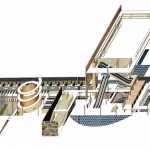
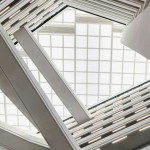
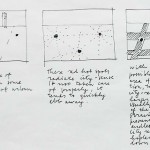
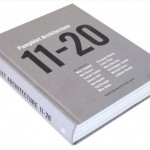
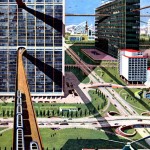
Wir möchten Dir die Source für urban minimal electro beats präsentieren und hoffen, dass auch Ihr Spaß und Freude an unseren Kritiken und Vorstellungen hast.
I’m curious to find out what blog system you have been using?
I’m experiencing some minor security problems with my latest website and I’d like to find something
more risk-free. Do you have any recommendations?
Socks is a wordpress-powered site. Very recommended.
Thank you for your post. I have always randomly bumped into your site during my research. And it’s been inspiring!
I have used your website multiple times to access and re read Exodus so thank-you!
I had just noticed that the final song
by the workers is missing at the end. Was it intentional to leave this out? Should it be added?
Again! Thanks for making the writing accessible!